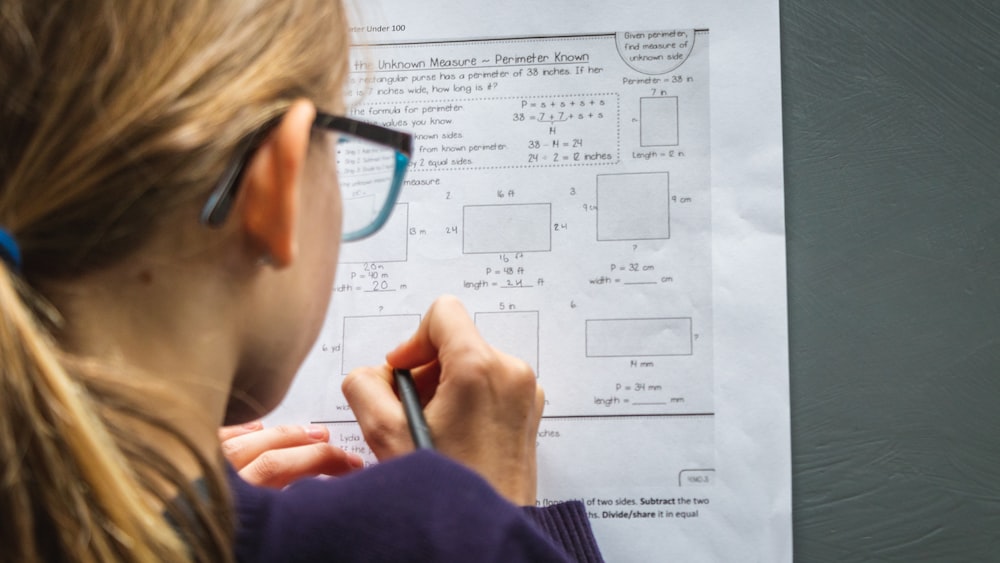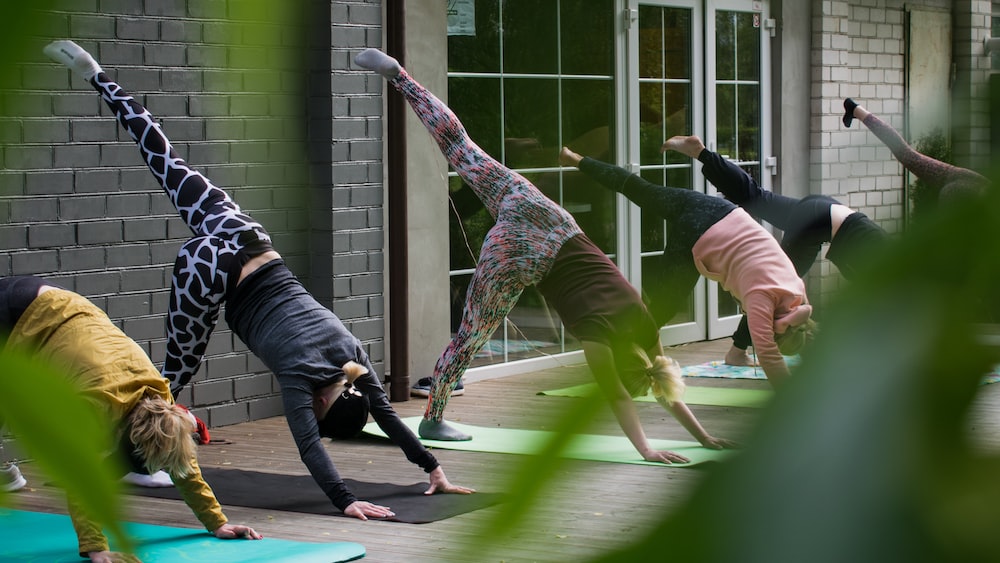What Is Mindfulness In Education? Discover The Benefits
Imagine walking into a classroom full of students quietly engrossed in their work, their minds as agile as ninja warriors leaping over mental obstacles. Better still, picture a teacher who doesn’t seem to be on the verge of a nervous breakdown! We all want our kids to succeed in school, but sometimes the hustle and bustle of academics can make both students and teachers feel a bit like they’re training for the Olympic Games of stress and anxiety. Enter mindfulness! This ancient practice is making a comeback in modern classrooms, and for a good reason. In this post, we’ll dive into the world of mindfulness in education, why it’s important, and how it can benefit students and teachers alike.
Understanding Mindfulness in Education
So, you may be wondering what all the fuss is about when it comes to mindfulness in education? Well, the secret sauce lies in how it can positively affect classroom dynamics and academic performance. But let’s pause for a moment and delve into the core concept of mindfulness, shall we?
What is Mindfulness?
Mindfulness is all about being present – paying attention to the here and now without getting lost in judgement or swimming through a pool of “what ifs”. It’s like taking a break from the never-ending merry-go-round of thoughts that tend to hijack our brains on a daily basis. Practicing mindfulness allows us to develop a refreshing sense of self-awareness and emotional regulation that can be beneficial not only for ourselves but also for those cute critters we call kids. And speaking of kids, let’s explore why mindfulness is important in education.
Mindfulness is the practice of being present, allowing us to develop self-awareness and emotional regulation that can be beneficial in education.
The Importance of Mindfulness in Education
The education system can sometimes feel like a battleground, with kids fighting off waves of standardized tests, pop quizzes, classroom hierarchy, and friendship dramas. It’s no wonder that our little warriors could use some mindfulness armor to protect them from stress and anxiety. Research has shown that practicing mindfulness in the classroom can help students cultivate essential skills such as focus, concentration, emotional regulation, and even empathy. These are all tools that can be wielded by both students and teachers to conquer the battlefield of education.
In addition to arming kids with essential life skills, mindfulness can also give them a crucial edge in academics. This edge can enhance their understanding of various subjects and drastically improve their academic performance.

Benefits of Mindfulness for Students
Now that we have a basic understanding of mindfulness and its significance in education, let’s dive into the nitty-gritty of how students stand to benefit from this life-changing practice.
Improved Focus and Concentration
- Compared to hamsters on a wheel, the mind of a student can be a proper tornado of thoughts, making it challenging to concentrate on the task at hand.
- Mindfulness exercises can teach kids the art of quieting the storm in their minds and staying engaged in the present moment without the distraction of racing thoughts.
- This improved focus and concentration not only help students in moment-to-moment tasks but can also be instrumental in their overall academic trajectory.
Enhanced Emotional Regulation
- Let’s be real – classroom drama can turn the academic environment into an emotional rollercoaster.
- Mindfulness practices equip students with the ability to recognize and monitor their emotions, helping them manage these emotional surges gracefully.
- By regulating their emotions effectively, students can better navigate challenging social situations and maintain healthier relationships.
Reduced Stress and Anxiety
- Students today face an immense amount of pressure to excel academically, which can lead to increased stress and anxiety.
- Mindfulness has been consistently observed to ease the burden on our young scholars by cultivating a sense of inner calm and resilience.
- With these new coping strategies in place, students are better equipped to handle the pressures of school life without letting stress get in the way of learning.
Mindfulness is an effective tool to help students cope with academic pressure and reduce stress and anxiety.
Better Academic Performance
- Perhaps the most tangible benefit of mindfulness for students is the positive impact on their academic performance.
- Studies have shown that students who practiced mindfulness not only improved in reading and writing scores but also saw significant gains in math scores.
- Mindful students are more engaged and productive in the classroom, providing a solid foundation for academic success.
Benefits of Mindfulness for Teachers
Alright, we’ve covered how students can benefit from the practice of mindfulness, but what about the unsung heroes of education – teachers?
Increased Self-Awareness and Emotional Intelligence
Have you ever observed how some teachers just get it when it comes to connecting with their students? It’s like they possess the gift of mind-reading. Well, mindfulness could be that magical power they’ve discovered, giving them increased self-awareness and emotional intelligence. Practicing mindfulness enables teachers to tune into their own thoughts and emotions, making them more alert to the underlying currents of the learning environment.
By cultivating self-awareness, teachers are better equipped to respond to students’ needs and feelings, often anticipating potential roadblocks and challenges before they become full-fledged catastrophes. Moreover, emotional intelligence allows educators to skillfully navigate the rollercoaster ride that is a typical school day, leading them to experience less stress and smoother classroom experiences.
Improved Classroom Management
Oh, the joys of classroom management! Shuffling papers, maintaining order, taming the chaos – it can be a Herculean task. But what if mindfulness could lend a hand and create a more harmonious learning environment?
The practice of mindfulness helps teachers be more present, and consequently, they become better at managing their classrooms. They are less likely to be overwhelmed by the whirlwind of activity and are able to maintain a sense of calm, even when their students are more boisterous than a flock of energized cats.
Mindful educators can more effectively observe and address potential issues in the classroom, fostering an inclusive and engaging atmosphere that encourages learning. The result? Classrooms that are peaceful oases in the midst of the chaos that can be the school communities.
Enhanced Teacher-Student Relationships
Picture this: educators who are fully present, attentive, and engaged with their students. Sounds like a blissful state only attainable in a utopian world, right? Not if mindfulness has anything to say about it!
The practice of mindfulness equips teachers with the ability to forge stronger connections with their students. By fostering empathy and understanding, it allows educators to be more attuned to each student’s individual needs and idiosyncrasies. This heightened awareness leads to relationships built on trust and rapport.
Mindfulness practice empowers teachers to create stronger connections with their students, leading to relationships built on trust and rapport.
Reduced Burnout and Increased Job Satisfaction
Teaching can sometimes be as grueling as trying to get a cat to yoga (a challenge only the bravest attempt). The mounting pressure to ensure student success, deal with behavior issues, and navigate bureaucratic requirements can easily lead to burnout. Enter mindfulness, the much-needed organizational buffer against the stressors of the profession.

Among its many virtues, mindfulness has been shown to reduce stress and anxiety levels in educators. The practice helps teachers to better manage their emotional energy, which in turn, leaves them feeling more accomplished and satisfied with their work. Mindfulness can also aid in preventing memory lapses, ensuring that teachers don’t end up forgetting reading assignments or scheduled exams.
To sum it up, mindfulness contributes to reduced burnout and increased job satisfaction, ensuring that teachers can continue making a difference in the lives of their students without feeling drained at the end of the day.
Implementing Mindfulness in Schools
Now that we’ve covered the benefits of mindfulness in education, you might be thinking, “Great, sign me up!” But how do we practically implement mindfulness in our schools to leaven the learning environment with its sweet, sweet benefits?
Mindfulness Programs and Curricula
There’s good news for educators looking to introduce mindfulness into their schools: an array of programs and curricula tailor-made for students and teachers alike. Some popular examples include Mindfulness in Schools Project (MiSP) and Learning to BREATHE, which provide guidelines and materials to integrate mindfulness into the school system.
These programs not only focus on equipping students with mindfulness skills but also on providing training and resources for teachers, ensuring that they can confidently incorporate mindfulness into their daily routines and lesson plans.
Mindful Classroom Activities and Exercises
For those who love practical applications, incorporating mindfulness into your classroom need not be a novelty. Varied activities and exercises can be sprinkled throughout the day, gently turning the atmosphere of your learning environment into one of awareness and presence.
Some ideas to get your mindful motor running:
- Guided meditation sessions during break times
- Mindful reading practices, where students pay close attention to their thoughts and emotions during the activity
- Mindful movement exercises, including yoga or stretching sessions
Remember, the goal is to create opportunities for students and teachers alike to establish and maintain a mindful presence during the school day.
Training and Support for Educators
As crucial as mindfulness programs and activities may be, equipping educators with the necessary skills and knowledge to implement them is of utmost importance. This includes training and support for teachers in the form of workshops, seminars, and online resources that encourage and nurture their mindful development.
Schools and educators can evaluate existing training options or collaborate with mindfulness experts to devise tailor-made workshops that address the specific needs of their staff and students. With the right training and support, teachers can feel empowered to not only embrace mindfulness for themselves but also to enrich their learning environments with its transformative impact.
Empowering teachers with mindfulness training and support is crucial for them to implement mindfulness programs and activities in schools and enrich their learning environments with its transformative impact.
Overcoming Challenges in Implementing Mindfulness
Let’s be honest: introducing mindfulness into a bustling school environment may seem like trying to fit a square peg into a round hole. Challenges such as time constraints, student resistance, and the dreaded bureaucracy may appear daunting, but fear not, for they are not insurmountable!

The secret lies in taking small, achievable steps and being patient with the process. Begin by incorporating mindfulness into your own personal teaching routine, then gradually introduce the concept to your students and colleagues. Over time, the benefits of mindfulness will become evident, generating enthusiasm and support for its continued integration into the school communities.
The Impact of Mindfulness on School Communities
Mindfulness transcends the personal level and has far-reaching effects on entire school communities. When embraced by students, teachers, and administrators alike, mindfulness can foster a positive school culture, support social-emotional learning, and promote resilience and well-being.
Creating a Positive School Culture
When you think of cats and school cultures, it’s hard not to imagine a room filled with kittens playing and purring happily in harmony, right? In a similar vein, incorporating mindfulness in education can create a positive school culture where students and teachers alike are more content, focused, and aware. A vibrant school culture is not only helpful for fostering academic success, but it also creates an environment where individuals feel supported, nurtured, and empowered.
In a modern educational landscape, where stress levels can be as high as the peaks of Mount Everest, introducing mindfulness practices into classrooms and curricula can act as a metaphorical dive into a stress-free oasis. A mindfulness program can help students and teachers connect on a deeper level, finding common ground and understanding one another more empathetically.
Supporting Social-Emotional Learning
It turns out that mindfulness practices are like a magical potion that can positively affect various aspects of an individual’s social-emotional learning. Studies have shown that students who are taught mindfulness techniques are more likely to exhibit enhanced emotional regulation, better decision-making skills, and improved interpersonal relationships – all crucial components of a healthy social-emotional development.
By incorporating mindfulness exercises into daily routines and classroom activities, educators can foster an environment conducive to social-emotional growth, where individuals are encouraged to pause, reflect, and respond thoughtfully to their emotions. Think of mindfulness as the magical fairy dust that helps students transform into emotionally intelligent butterflies.
So, let’s say we spread this fairy dust throughout a school, what might we see? A community where individuals are more mindful of their actions, less reactive, and more thoughtful in their interactions. This, in turn, leads to a school culture that is amazingly more compassionate, supportive, and inclusive.
Fostering Resilience and Well-being
Imagine navigating the rough seas of life, with stormy waves crashing all around and howling winds threatening to capsize your tiny boat. Now envision practicing mindfulness – the calming breeze gently guiding you, the waves subsiding, and your boat steadied. In other words, mindfulness practices can act as a stabilizing force that helps foster resilience and well-being in the face of adversity.
By teaching students and teachers techniques to manage stress and anxiety, we’re essentially providing them with the tools to remain composed amid tumultuous environments or situations. As their levels of resilience and well-being increase, so does their capacity to thrive academically, emotionally, and socially.
Mindfulness practices can help foster resilience and well-being in the face of adversity, providing individuals with the tools to remain composed amid tumultuous environments or situations and increasing their capacity to thrive academically, emotionally, and socially.
FAQs
1. How can I introduce mindfulness to my students?
Introducing mindfulness to your students can be as simple as setting aside a dedicated time each day for short mindfulness exercises or incorporating more comprehensive mindfulness programs into your classroom activities. Start by creating a welcoming and nurturing atmosphere where students feel comfortable and open to exploring mindfulness techniques.
2. What are some simple mindfulness exercises for the classroom?
Simple mindfulness exercises for the classroom include practicing deep, focused breathing, engaging in a body scan meditation, or encouraging students to mindfully observe their emotions and thoughts. The key is to start small and gradually incorporate more exercises as both students and teachers become more comfortable with the practice.

3. How can I become a more mindful educator?
Becoming a more mindful educator begins with your own personal mindfulness journey. Engage in regular mindfulness practices, participate in training sessions, and seek support from your peers or mindfulness experts. This will not only help you deepen your understanding of mindfulness techniques but also make it easier to incorporate them into your teaching methods.
4. Are there any potential drawbacks to implementing mindfulness in schools?
While mindfulness has numerous benefits, potential drawbacks may include resistance or skepticism from school staff, lack of adequate training resources for educators, and misconceptions about the goals of mindfulness practices. It’s essential to address these challenges by providing appropriate support, training, and resources to effectively integrate mindfulness into the educational ecosystem.
Conclusion
In a world that sometimes resembles a chaotic circus, mindfulness practices can feel like finding a peaceful sanctuary within the whirlwind of our daily lives. The implementation of mindfulness into the educational experience is instrumental in shaping positive school cultures, fostering social-emotional growth, enhancing resilience, and nurturing a collective sense of well-being among students and teachers.
Though there may be challenges in integrating mindfulness practices within the classroom, the rewards are certainly worth the effort. Just imagine a world where our schools are havens of focused, emotionally regulated, and compassionate individuals – sounds like a dream come true, doesn’t it?
So, let’s embark on this collective journey of introducing mindfulness into our schools and usher in an era of kinder, more mindful individuals who make the world a better place, one deep, calming breath at a time.
I wish you the best! Fabian.
Share with your Friends:






